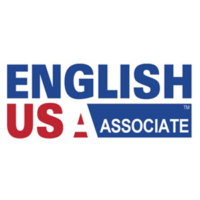Evaluating Student Recruitment Success: Content Marketing Strategies
Today, we are going to show you how to apply common content marketing strategies to international student recruitment. As you most probably already know, content marketing professionals have this term: purchase funnel.
The idea behind is that every prospective customer has to go through several stages before making a purchase. These stages are commonly known as:
- Awareness of the product/company/situation
- Opinion on the product/company
- Consideration of the product
- Preference of the product
- Purchase of the product.
Now, let’s see what the funnel might look like when you try to attract students to your institution:
Content marketing funnel for international student recruitment

As you can see, the broadest part of the funnel is related to the information distribution. It’s about making as many students as possible aware that such an opportunity exists. In addition to that, it involves agreeing that this particular opportunity could be great for them. So, how can you distribute information successfully? The more channels you use, the better. Distribute your information online, on your website, other websites and, of course, social media. Offline you can visit student fairs, agent fairs and other industry-specific events to build and nurture your partner networks. Sharing student testimonials and recommendations, on the other hand, will help you build trust in parents.
The three barriers
Most often, students first discover the opportunity to study abroad, then form an opinion on what could or could not be a viable option for them to consider. And here comes the first barrier: some prospective students will decide that they actually don’t want to study at this point in their lives. So the funnel begins to narrow down.
If the idea is appealing to them and they feel the desire to study abroad, they will do research on the topic. They will consider all possible options, as well as financial, cultural and social aspects. Then, they will ask for recommendations, talk to agencies and dig into social media. After gathering enough data, they will first narrow their choice down to a couple of countries and a couple of universities. This is where the second barrier stands. Some students will choose one country over another due to cultural or economic reasons. One university will win over another because of the programmes or the recommendations. These factors will reduce the number of students that are willing to enrol even more.
Finally, only the most dedicated students who have gone through all 4 stages will reach the final stage: making the decision to enrol to your university. And here there is a third barrier, including factors such as VISA issues, faulty application that results in decline by the university, failing to obtain a scholarship, changes in financial situation or simply missing the application deadline.
All three barriers should be kept in mind while preparing your student recruitment plans and the communication strategies. How to approach this? Stay tuned for our next post where we will take a detailed look into the three barriers.










































